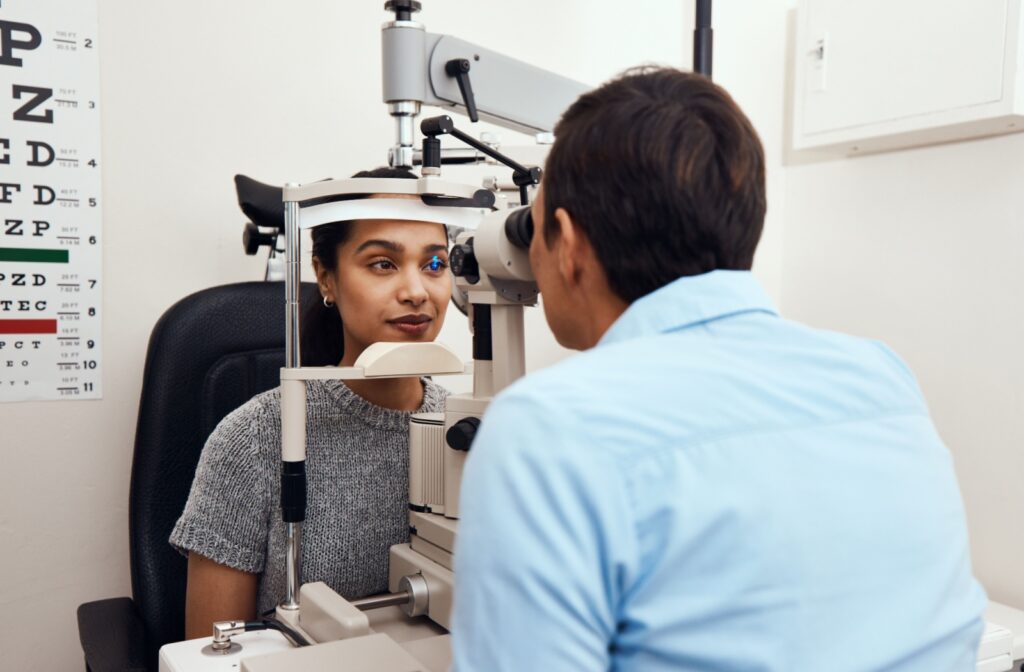Dry, scratchy, and irritated eyes are never pleasant, but could they also be the source of your headaches? If you’ve experienced both discomfort in your eyes and persistent head pain, you might be wondering if these symptoms are related.
Recent research suggests that there may be a connection between dry eye disease and headaches, especially migraines. Understanding this link could help you find relief from your symptoms. For example, you may want to explore dry eye therapy such as intense pulsed light therapy.
What Is Dry Eye Disease?
Dry eye disease happens when you don’t produce enough tears to lubricate your eyes, or your tears don’t function properly. This can cause discomfort and vision issues. Dry eye disease is common and it affects nearly 16.4 million Americans, according to the National Eye Institute.
Dry Eye Disease Causes
Dry eye disease can be caused by various factors, including:
- Age: People over 50 are more likely to experience dry eyes due to reduced tear production.
- Gender: Women are more prone to dry eye disease due to hormonal changes during pregnancy, menopause, or while using contraceptives.
- Environmental factors: Exposure to wind, dry climates, air conditioning, and pollution can dry out your eyes.
- Screen time: Spending long hours on digital devices can lead to reduced blinking and insufficient tear spread.
- Medical conditions: Diabetes, thyroid disorders, and autoimmune diseases like Sjögren’s syndrome can contribute to dry eyes.
Symptoms of Dry Eye Disease
Common symptoms of dry eyes include:
- A scratchy or gritty sensation
- Burning or stinging
- Redness
- Sensitivity to light
- Blurry vision
When these symptoms are persistent and interfere with daily activities, it’s important to speak with an eye care professional to explore possible treatments.
The Connection Between Dry Eye Disease & Headaches
While the direct link between dry eye disease and headaches isn’t fully understood, research suggests an overlap between the two conditions.
For example, a 2019 study found that people with migraines more often exhibit symptoms of dry eye disease such as more inflammation in their eyes, an unstable tear film, and poor quality tear production.
Another study found that those with migraines can have a different eye structure.

Treating Dry Eye Disease
The good news is that there are many treatments that can address dry eye disease symptoms, from simple eye drops to punctal plugs.
Diagnosing Dry Eye Diseases
If you’re experiencing symptoms of dry eye disease, there are tests and tools to investigate tear production and tear film stability further. Common diagnostic methods include:
- Schirmer’s Test: Numbing eye drops are placed in the eyes. Then, a small piece of paper is placed on the edge of the eyelid. The amount of moisture collected on the paper after 5 minutes is used to evaluate tear production.
- Tear Break-Up Time (TBUT): This test uses a dye to see how long the tear film stays on your eyes after you blink. A dye is placed on the tear film and the patient blinks until it covers the entire eye. Then, the patient looks forward without blinking, and if the dye doesn’t last long, the patient may have dry eye disease.
- Slit lamp exam: A slit lamp is a microscope. Along with a bright light, it can be used to investigate whether the eye is making sufficient tears.
Treatments For Dry Eye Disease
Depending on the severity of your symptoms and underlying causes, a variety of treatments may be recommended, such as:
- Over-the-counter solutions: Artificial tears, ointments, and gels can be purchased without a prescription. These products may adequately treat mild dry eye disease.
- Prescription solutions: For more serious cases, prescription treatments such as cyclosporine (Restasis) or lifitegrast (Xiidra) can help increase tear production.
- Lifestyle adjustments: Try using a humidifier to maintain room moisture, take frequent breaks from screens, stay hydrated, and try to get enough sleep. Changes in diet may also help relieve symptoms of dry eye disease but talk to a doctor first before starting any supplements.
Other treatments such as punctal plugs and intense pulsed light (IPL) therapy are available. Punctal plugs are small plugs placed in the tear ducts that block tear drainage. This allows the eye to stay moist for longer. Punctal plugs can be inserted without surgery.
IPL therapy can treat those with meibomian gland dysfunction (MGD). The meibomian glands create the oil layer of the tear film, and it’s this layer that slows down the evaporation of tears. IPL is a non-invasive treatment that can liquify blockages in the meibomian glands.
Get Dry Eye Disease Treatment at West Valley Dry Eye
Persistent dry eyes and frequent headaches can take a toll on your quality of life, but you don’t have to endure these symptoms alone. At West Valley Dry Eye, assessing dry eye disease is in our name! We can help you find a treatment solution that brings you closer to relief. We’re passionate about improving your vision, so please don’t hesitate to contact us and book an appointment.


